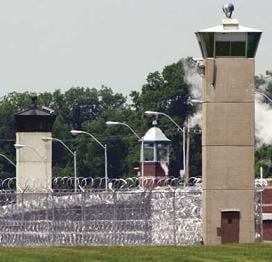Topic Tuesday #60 2013/09/10 - "Red Pill Blue Pill or Suicide is Painless"
An idea has crept into my mind. Freedom. We have an interesting culture. We value life almost universally as a species, our own species. Let me cut to the chase or I will dawdle for a while waxing poetic on this deep thought.When someone is on death row or serving enough multiple life sentences that they will die in prison, why not offer them the Blue Pill, and let them choose to drift off to la la land and pass away peacefully?
 Harsh? I don't think so. Analytically it would be a mutually beneficial arrangement. The inmate would not have to languish wasting their potential. The state and the taxpayer would not have to spend the nearly $50,000 a year to keep an inmate "safe" and healthy. The taxpayer and the inmate continue to benefit as an aging prison population starts to rack up the medical bills. The prisoner suffers. The tax payer pays, sometimes over $100,000 a year per aging inmate.
Harsh? I don't think so. Analytically it would be a mutually beneficial arrangement. The inmate would not have to languish wasting their potential. The state and the taxpayer would not have to spend the nearly $50,000 a year to keep an inmate "safe" and healthy. The taxpayer and the inmate continue to benefit as an aging prison population starts to rack up the medical bills. The prisoner suffers. The tax payer pays, sometimes over $100,000 a year per aging inmate.There is a question that has always rattled around in my head. Why does a prisoner, sentenced to death, must be deemed healthy before being executed?
Anyone sentenced to death, automatically (almost always) sits in a special cell block for about 20 years before being executed. The current financials on this have it as an average of almost $90,000 a year MORE to house and litigate these inmates. That's $140,000 a year, for 20 years. $2,800,000 for an average death sentence.
Average "lifer" let's say they made it to 30 (roughly median age of the average prison population across the United States) before having the book thrown at them and tossed away to rot.
Based on demographics, major medical problems begin to escalate around the age of 55. It has been estimated this can triple the cost of care for an inmate until they pass away. If they live to the average North American lifespan of 79 years (both men and women averaged) and they were good girls and boys and were put in medium security AND they were of average health throughout their life. carry the 2....
49 years in prison. 49 * $50,000=$2,450,000 Plus the extended health care cost for the ages over 55. 24
years * $100,000=$2,400,000 + the healthy baseline = $4,850,000 We can go ahead and average this down to $4.5 mil based on the following health factors lowing the life expectancy of any inmate:
Prison populations exhibit an elevated prevalence of communicable disease. High levels of violence, including sexual violence, have been reported among imprisoned populations. Consensual sex without condoms as well as drug injection and tattooing without sterile equipment are reported to occur at dangerous levels and to result in transmission of diseases, such as HIV.
For a well cared for lifer, $4,500,000 to support them to death do they part. nearly 5 decades behind razor wire.
For the average death row candidate; $2,800,000 to support them until we execute them after about 20 years.
 So. What do you think?
So. What do you think? Red Pill, face the grime reality of being put to death or dying in prison, possibly old and enfeebled.
OR...
Blue Pill. Die on your own terms, without pain or decades of suffering.
I think we should offer it as a choice. What do you think?



